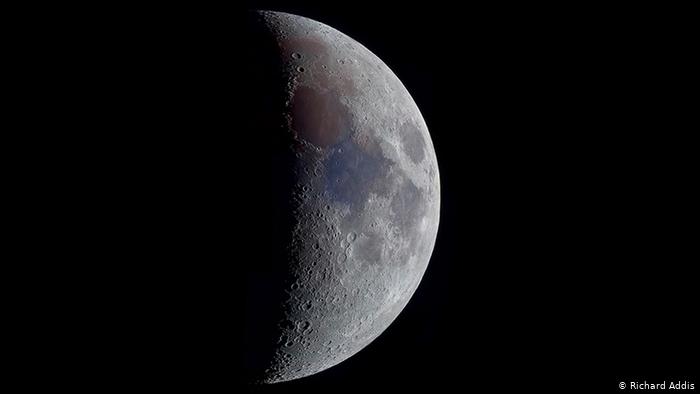New studies have found that water might be distributed across the lunar surface in more places and larger quantities than previously suspected. It could be useful for astronauts seeking refreshment or fuel in future.
Two new studies published in Nature Astronomy on Monday suggest there could be much more water than previously thought, including ice stored in permanently shadowed "cold traps" at lunar polar regions.
"We announced that, for the first time, we've confirmed H2O in sunlit areas of the moon. This indicates that water might be distributed across the lunar surface," NASA tweeted on Monday from its moon-related account.
We just announced that - for the first time - we’ve confirmed H2O💧 in sunlit☀️ areas of the Moon. This indicates that water might be distributed across the lunar surface. https://t.co/Gn0DSu5K95
— NASA Moon (@NASAMoon) October 26, 2020
For decades the moon was thought to be bone dry. But 11 years ago, research found that water was relatively widespread in small amounts on the dark side of the moon. A team of scientists is now reporting the first clear detection of water molecules in sunlit areas.
Drinking water, rocket fuel
More than 15,400 square miles (40,000 square kilometers) of lunar terrain have the capability to trap water in the form of ice, according to the University of Colorado's Paul Hayne, who led the team of scientists.
That area is roughly 20% larger than previous estimates, he said, adding that temperatures in these so-called cold traps are as low as minus 261 degrees Fahrenheit (minus 163 degrees Celsius), meaning they could hold onto the ice for millions or even billions of years.
Using data from NASA's Lunar Reconnaissance Orbiter, the scientists found cold traps as small as a few meters across and as wide as 18 miles (30 kilometers) and more.
The discovery raises the tantalizing prospect that astronauts on future missions could tap into these resources for drinking and making rocket fuel.
"We believe this will help expand the possible landing sites for future lunar missions seeking water, opening up real estate previously considered 'off limits' for being bone dry,'' Hayne told The Associated Press.
Co-author Casey Honniball of the Hawaii Institute of Geophysics and Planetology said the water might be trapped in glass beads, or another substance that safeguards it from the harsh lunar environment. He said that if the water was found to be "abundant enough in certain locations," astronauts might be able to use it as a resource for human exploration.
Scientists believe the moon's water came from comets, asteroids, interplanetary dust, the solar wind or lunar volcanic eruptions. According to Hayne, researchers will have a better understanding of the sources "if we can get down on the surface and analyze samples of the ice."
The US wants NASA to put astronauts back on the moon by 2024 as part of its Artemis program.
Latest Stories
-
Medical Council to enforce specialist distribution nationwide
24 mins -
Fire guts old Fadama market, man reportedly loses GHC800,000
29 mins -
Nacee bemoans low performance fees for gospel artistes
30 mins -
We don’t operate investment platform – GNPC
46 mins -
Ghana Fact-checking Coalition condemns disinformation on voting by Wontumi FM broadcaster
48 mins -
IFRS 17 will augment and accelerate NIC’s efforts to implement risk-based capital – Deloitte
50 mins -
IFRS 17 is one of biggest changes to financial reporting standards in insurance industry – Deloitte
1 hour -
Enimil Ashon: Whose polls do you believe: ‘Global Info or Prof Sarpong?
1 hour -
Ghana Climate Innovation Centre welcomes 25 businesses into Cohort 10
1 hour -
ADB will continue to enhance customer value and service experience – Managing Director
1 hour -
Colour Cure Exhibition highlights art’s role in healing and advocacy
1 hour -
GPL 2024/25: Aduana FC sack coach Yaw Acheampong after poor run
1 hour -
John Dumelo pays ¢10,400 in outstanding fees for visually impaired law student facing deferral
1 hour -
CHRAJ clears Rev. Kusi Boateng of conflict of interest, says he doesn’t own 2 passports with different names
1 hour -
We’ll restore hope by cutting down taxes and avoiding unreasonable borrowing – Ato Forson
1 hour

